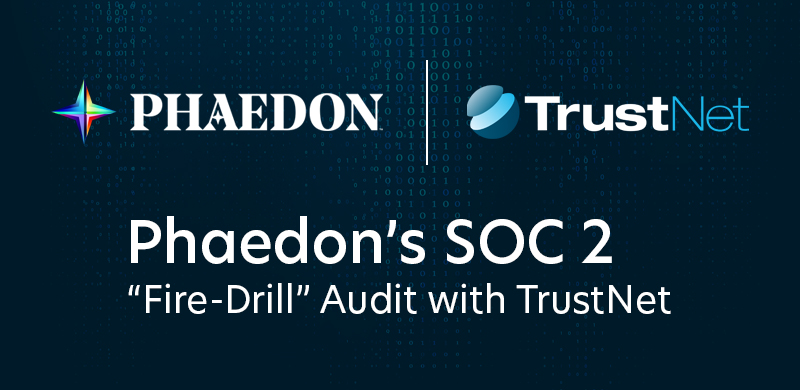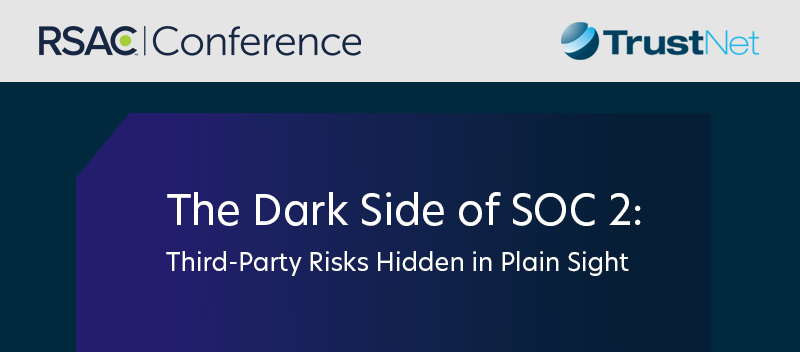PCI DSS Compliance: What It Is and Why Top Companies Can’t Afford to Ignore It

For organizations that handle payment card data, compliance is not just a regulatory checkbox; it is a critical part of the business to protect itself from financial loss, reputational damage, and operational disruptions. CISOs and other compliance decision-makers must strengthen all processes involved in ensuring the business is PCI DSS compliant rather than hinder business efficiency.
Here’s why PCI DSS compliance matters to your organization:
-
- Safeguards sensitive cardholder data for secure payment processing.
- Mitigates risks of costly breaches and loss of customer trust.
- Builds a strong foundation of payment security standards.
Achieving and maintaining PCI DSS compliance can be overwhelming. Audit fatigue, complex vendor relationships, and ever-changing requirements make it feel like a moving target. But when done right, compliance becomes a competitive advantage, protecting customers, minimizing risk, and streamlining operations.
This article explains PCI DSS compliance and why it matters to your business. You will also learn the key requirements you must meet and how staying compliant helps protect your business and your customers, avoid unnecessary costs, and unlock new revenue opportunities over time.
What is PCI DSS Compliance?
PCI DSS compliance means meeting the standards outlined in the Payment Card Industry Data Security Standard (PCI DSS). This global framework is designed to protect sensitive cardholder data by enforcing rigorous security measures across its storage, processing, and transmission. PCI DSS compliance serves as a lifeline for businesses looking to safeguard payment data and eliminate vulnerabilities.
The PCI Security Standards Council (PCI SSC), established in 2006 by major credit card brands like Visa and Mastercard, governs these standards. Its goal is to set uniform payment industry standards that reduce fraud, data breaches, and cyber threats targeting payment card systems.
Here’s who PCI DSS applies to:
— Merchants
Any business that accepts, processes, stores, or transmits payment card data, regardless of size or transaction volume. This includes small e-commerce stores, mid-sized businesses, and large retailers.
— Service Providers
Companies that process, store, or transmit payment card data on behalf of merchants, such as payment processors, cloud service providers, managed security providers, and hosting companies.
— Financial Institutions
Banks, credit card issuers, acquirers, and other entities involved in payment processing.
— Other Entities
Businesses that develop software, manufacture hardware, or provide security solutions that interact with cardholder data or payment transactions, such as point-of-sale (POS) system providers or encryption service providers.
Merchants processing credit cards are categorized into categories that depend on the volume of the cards they process:
-
- Level 1 merchants process over 6 million Visa transactions annually across all channels;
- Level 2 merchants process between 1 and 6 million transactions across all channels;
- Level 3 merchants process 20,000 to 1 million e-commerce transactions annually. PCI level 3 certification is still necessary even for these smaller merchants.
- Level 4 merchants process fewer than 20,000 transactions or do not fall into the other level categories for other reasons. PCI certification is still necessary.
Furthermore, PCI service providers also fall into different visa service provider levels according to credit card processing volume as follows:
- The PCI level 1 service provider processes, stores, or transmits more than 300,000 credit card transactions annually. They must file an annual Report on Compliance (ROC) with an Attestation of Compliance (AOC) from a Qualified Security Assessor (QSA).
- The level 2 service provider offers data storage, transmits, or processes less than 300,000 credit card transactions yearly. To obtain PCI level 2 certification, an organization must complete a Self-Assessment Questionnaire (SAQ) annually. An internal scan, penetration test, quarterly network scan, and an attestation of compliance for service providers form are also necessary.
At TrustNet, we offer QSA-Assisted SAQ services, streamlining the compliance process so businesses can stay secure while focusing on growth. Our expert guidance is especially valuable for growing service providers, businesses with complex IT environments, and organizations looking to enhance security without diverting internal resources. By simplifying compliance, we help companies allocate more time and energy to scaling their operations.
Overall, PCI DSS compliance helps shield your business against threats, achieve payment data protection, and maintain customer trust. It’s more than a security measure; it’s a responsibility.
Explore PCI DSS Compliance Solutions with TrustNet Learn More
Why Your Organization Needs PCI DSS Compliance
Amid any business growth, your customers entrust you with something invaluable – their payment data. Protecting it isn’t just about meeting expectations; it’s about safeguarding your reputation, ensuring operational stability, and building a resilient future for your business.
Here’s why your business needs PCI DSS compliance:
-
- Protect customer trust: Customers expect their payment data to be safe. Compliance demonstrates your commitment to protecting customer data and strengthening trust with both customers and partners.
- Avoid breaches and liabilities: Non-compliance increases the risk of costly payment breaches, leading to heightened liability, damaged reputations, and operational setbacks.
- Prevent legal and financial penalties: Failure to comply with the payment card industry data security standards can result in hefty fines, lawsuits, and industry sanctions.
The business benefits of PCI DSS go beyond avoiding penalties. It creates a robust framework for secure transaction processing, positioning your organization as a trusted stakeholder in the payment ecosystem.
At its core, PCI DSS isn’t just about preventing breaches; it’s about showing customers and partners that their data is a top priority. Building this trust is essential for long-term growth and resilience.
How Can TrustNet Help You Achieve PCI DSS Compliance
The PCI DSS compliance process can be complex and overwhelming without the right tools and expertise. That’s where TrustNet’s PCI Accelerator+ comes in. By leveraging Advisory, Automation, and Assessment, we simplify and streamline the compliance process, empowering your organization to safeguard sensitive information efficiently and effectively.
Here’s how PCI Accelerator+ can guide your business through the key steps to achieving PCI DSS compliance:
Step 1: Conduct a PCI Readiness Assessment
Start with a thorough evaluation of your current security practices. PCI Accelerator+ provides Advisory services to help you determine your organization’s compliance level based on transaction volumes and existing safeguards. This readiness assessment identifies gaps in your practices, ensuring you know which areas require focus and improvement.
Step 2: Perform a Gap Analysis for PCI DSS
PCI compliance begins with understanding what’s missing. Using the Advisory pillar of PCI Accelerator+, you can compare your current procedures against PCI DSS requirements. This gap analysis uncovers both technical and procedural vulnerabilities that could hinder compliance, giving you a clear roadmap for remediation.
Step 3: Remediate Vulnerabilities
PCI Accelerator+ steps in with expert remediation consultation, guiding your organization in addressing vulnerabilities. Whether it’s implementing stronger firewalls, upgrading access controls, or deploying necessary software patches, the platform ensures your business is equipped to protect against risks and meet PCI DSS standards.
Step 4: Leverage GRC Automation
Compliance can’t be a one-time effort; sustainable security requires ongoing controls. Through its focus on Automation, PCI Accelerator+ simplifies Governance, Risk, and Compliance (GRC) processes. Automated workflows, system monitoring, and streamlined documentation reduce the complexity of maintaining compliance, ensuring your organization stays on track without unnecessary administrative burdens.
Step 5: Conduct Ongoing PCI Assessments
PCI DSS requires periodic assessments to ensure your organization remains secure and up-to-date with evolving standards. Leveraging the Assessment pillar of PCI Accelerator+, you gain access to a comprehensive PCI assessment framework. This includes expert review and guidance to validate your compliance efforts, identify improvements, and provide detailed auditing for peace of mind.
The TrustNet PCI Accelerator+ Advantage
By combining Advisory, Automation, and Assessment, PCI Accelerator+ ensures your organization is equipped to not only achieve PCI DSS compliance but to maintain it seamlessly over time.
TrustNet simplifies PCI DSS compliance, helping you secure your payment systems and enhance customer trust. Contact Our Experts for a FREE consultation.
Subscribe to the TrustNet Newsletter
actionable cybersecurity strategies, and TrustNet’s cutting-edge solutions.




